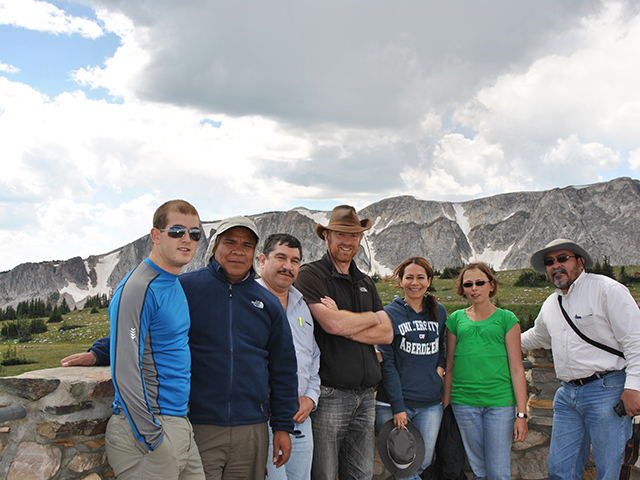
University of Aberdeen geologist Dr Stuart Archer explains how he brings reservoirs to life for his students.
When it comes to the oil industry, one of the most difficult things to get your head around, regardless of whether you’re a student or been in the business 30 years, is the scale of an oil field.
How do you bring to life an environment that’s located 5km below the sea floor? And how do you give someone an idea of how big a volume a billion barrels of oil is?
A teaching exercise I’ve always used when lecturing at the University of Aberdeen is to take my students for a long walk up Bennachie – and not just because I’m a big fan of the outdoors.
We take the much loved local landmark, force it 4,000m down into the ground, and fill it with oil – not literally of course. Starting with a Digital Elevation Model, we map Bennachie using computer software developed by Schlumberger and Halliburton to create a static model. We can then visualise the “Bennachie oil field” in 3D.
Seeing it in 3D is great, but nothing beats the real thing, and as we begin the climb up the north-east’s most iconic summit, students soon get an idea for just how big an oil field is. Certainly, by the time they’re out of breath at the top, they’ve got a healthy respect for it as well!
Of course, the oil doesn’t just slosh around inside an oil field like a big lagoon, so we need to fill our Bennachie field full of rocks. This leads to a trip to another north-east landmark – Stonehaven. The Devonian rocks found on Stonehaven’s coast, are the closest thing we’ve got to the Triassic rocks found beneath the North Sea, indeed they have very similar properties in terms of the proportions of the sands and shales.
At 420million years old, the rocks at Stonehaven are some of the oldest sedimentary rocks in Britain, and were laid down when the North Sea and the Midland Valley were still just a big river system.
As well as students, I’ve taken countless industrialists to Stonehaven to help them get a first-hand look and feel for the rocks that contain the hydrocarbons that the entire industry is built around. And it’s not just geologists like myself – engineers, accountants and lawyers have all come along, and each leaves with a better understanding and appreciation of the criticality of the rocks that drive our industry.
The University of Aberdeen’s Geosciences department is world renowned, and I like to think that’s due not just to our strong commitment to research-based learning, but also our willingness to think out-of-the-box and give our students teaching and training experiences that will stay with them as they begin, or continue, a successful career in the energy industry.
Recommended for you
